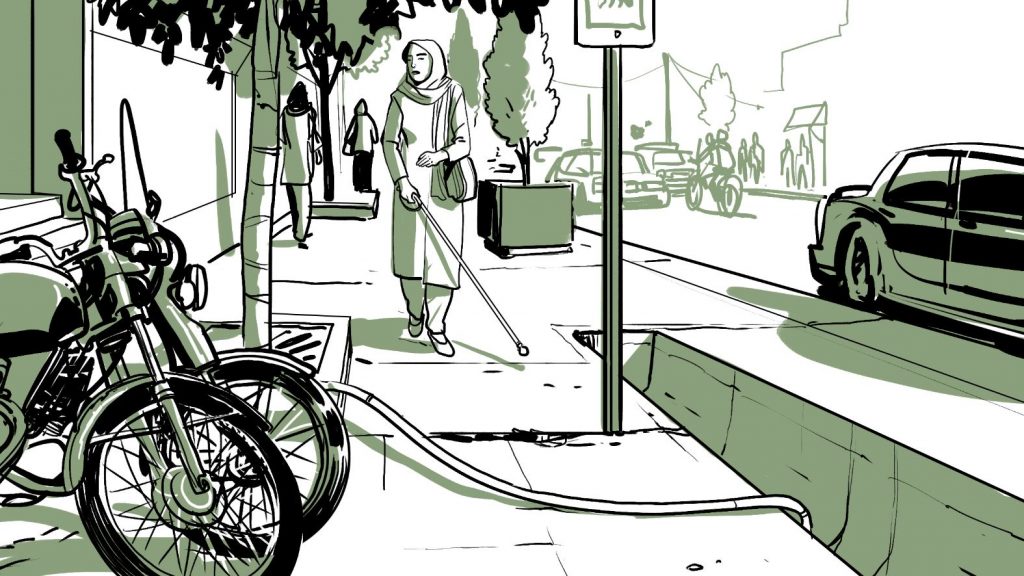IV. Inaccessible infrastructure

The transportation system here is so weak and difficult to use even for those who do not have to use a wheelchair. The sidewalks are also a real catastrophe. So, I have no choice but to ask others to do my stuff for me while I spend most of my days trapped in my room.[119]
—Hassan, 27, wheelchair user with muscular dystrophy, May 12, 2017
As a result of the poor accessibility of Iran’s public infrastructure and transportation, people with disabilities in Iran we interviewed often remain trapped in their homes, unable to live independently and participate in society on an equal basis with others. While many interviewees reported that in recent years the Iranian government has made some progress in making public infrastructure and transportation more accessible, especially in Tehran and larger cities. However, the interviewees noted that it is still far from being fully accessible.[120] Iranians with disabilities who live in rural areas face particular difficulties as there is limited physical accessibility of public infrastructure and transportation in these areas.[121] Authorities have also not consistently provided accessibility for all types of disabilities; for instance, new buses in some major cities are now equipped with ramps for wheelchairs to board. Yet, these buses lack audio systems to announce current and upcoming bus stops, which are essential for people who are blind or have low vision.[122]




